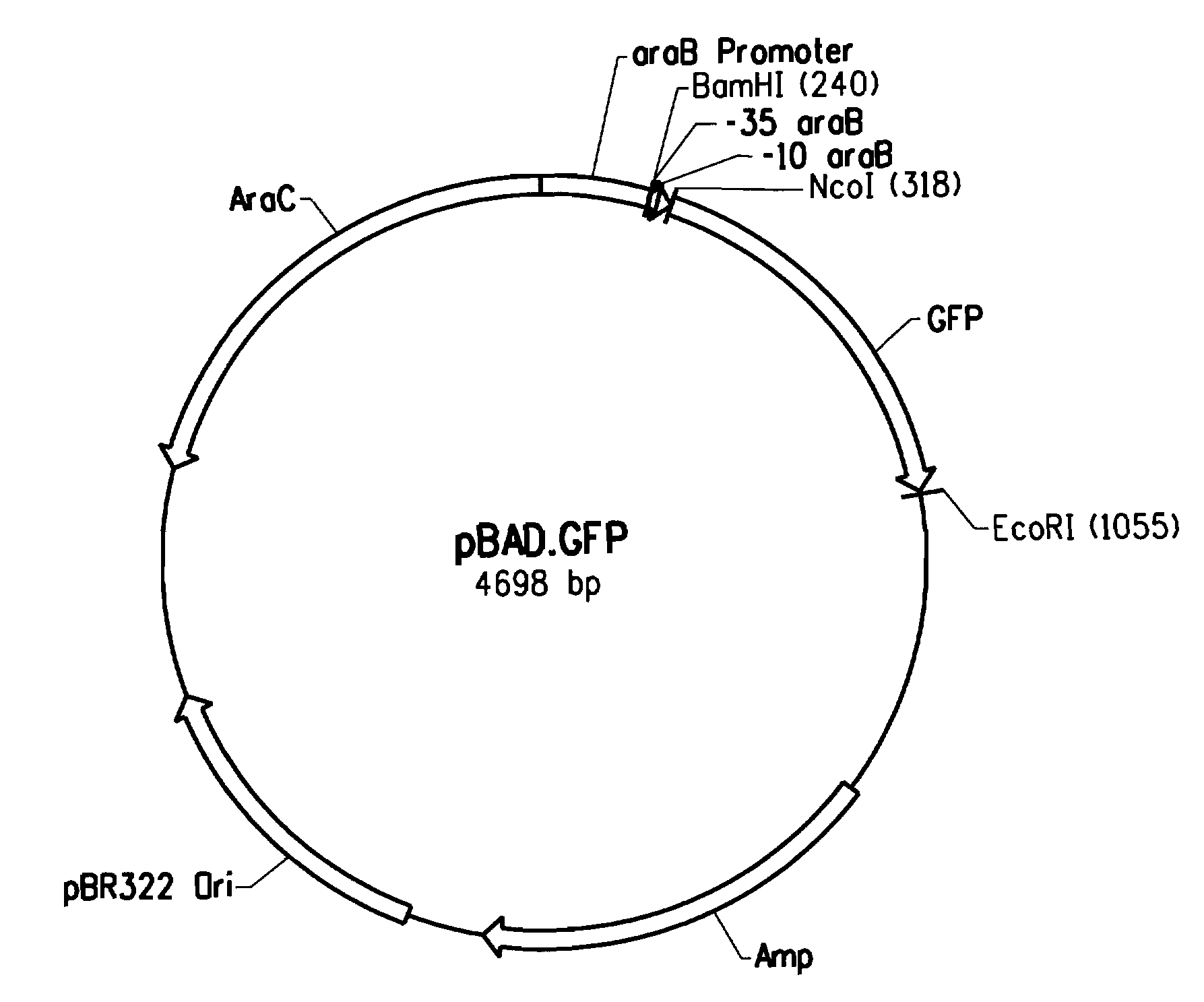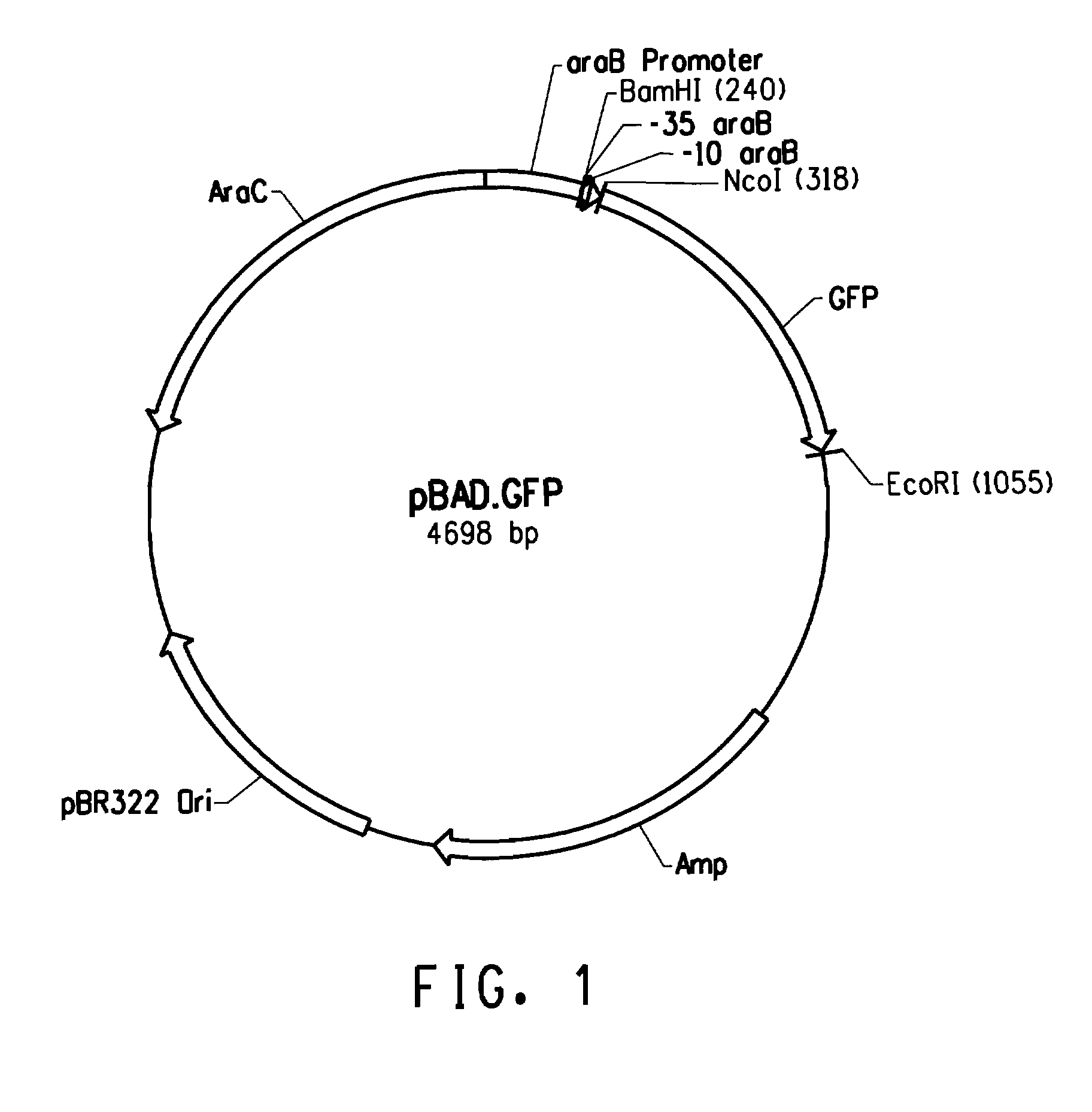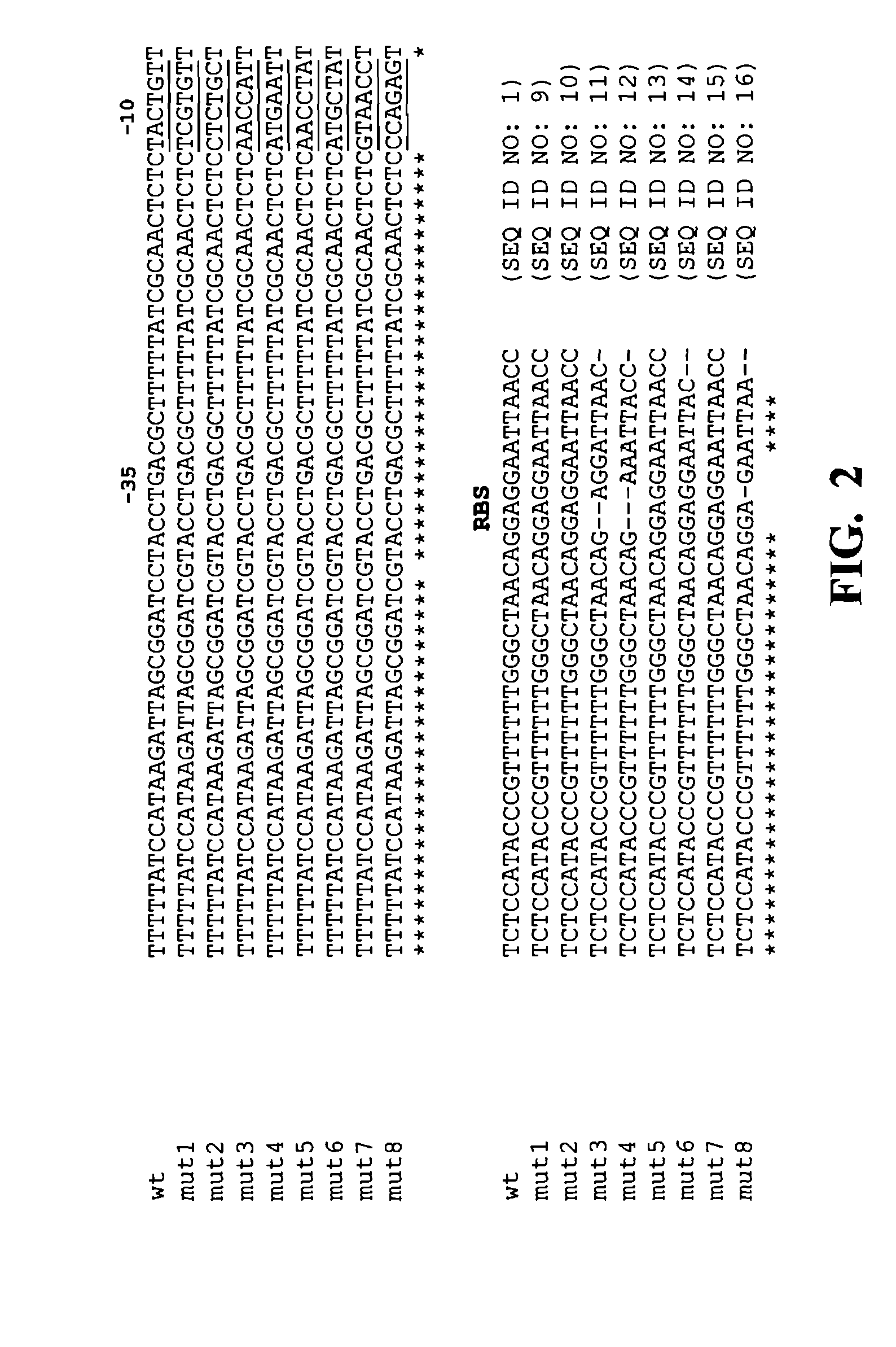Mutant arabinose promoter for inducible gene expression
- Summary
- Abstract
- Description
- Claims
- Application Information
AI Technical Summary
Benefits of technology
Problems solved by technology
Method used
Image
Examples
example 1
Construction of Mutant araB Promoter Library
[0195]Typically, strong E. coli promoters share significantly more sequence homology with the consensus −35 and −10 regions of the strong E. coli promoters (in Biochemistry, Voet, D. & Voet. J. G., 1990, John Wiley & Sons, Inc., Hoboken, N.J., pp. 855-858; 1st edition). The araB promoter is a medium strength promoter. Its −10 promoter sequence (TACTGT) is significantly different from the consensus −10 region (TATAAT) of stronger E. coli promoters. This difference is believed to lead to lower gene expression levels depending on the sequence context of the 5′ end sequence of the gene. One strategy of improving the araB promoter strength is to change the −10 promoter sequence of araB into that of the consensus sequence. An alternative approach is to introduce randomization at the −10 promoter region, while keeping the −35 promoter region unchanged as it overlaps with the binding site of the transcriptional regulator AraC.
[0196]AraC is the tra...
example 2
Transformation and Quality Control of the Library
[0202]The ligation mix of the library was transformed into electro-competent E. coli TOP10 cells (Invitrogen) and plated on LB / ampicillin plates (100 μg / mL). Approximately 20,000 colonies were obtained. In order to test whether mutations were actually introduced into the -10 region of the promoter, eight random constructs were selected for sequencing. The eight colonies were inoculated into 3 mL of LB-ampicillin broth (10 g / L bacto-tryptone, 5 g / L bacto-yeast extract, 10 g / L NaCl, 100 mg / L ampicillin; pH 7.0). Plasmid DNA was extracted with the Qiagen miniprep kit (Qiagen, Valencia, Calif.) and the DNA sequence was determined.
[0203]FIG. 2 shows that the −10 region of the 8 sequenced mutant promoter constructs (SEQ ID NOs: 9-16) from the library had different sequences (underlined region) in comparison to the wild type (wt) starting sequence. The −35 region of all the constructs remained wild type. About half the constructs had deletio...
example 3
Use of a Fluorescence Activated Cell Sorter (FACS) to Identify Mutants with Increased Expression
[0205]An aliquot of the library of mixed constructs was inoculated in LB / Amp (100 μg / mL), grown up to OD600 of 0.3, and induced with 0.2% arabinose for about 4 hours. E. coli TOP10 cells comprising the wild type arabinose promoter sequence (SEQ ID NO: 1) in the pBAD.GFP vector were grown up in the same manner to serve as controls.
[0206]The cells were analyzed with a fluorescence activated cell sorter (FACS; FACSVantage™ SE system; BD Biosciences, San Jose, Calif.), using a 488 nm laser. The E. coli TOP10 cells served as a negative control and were used to set up the parameters of the FACS and to set the boundaries for the subsequent gating of the cells. Fluorescence was measured at an emitted wavelength of 530 nm (±15 nm). E. coli TOP cells not transformed to express GFP (i.e. no fluorescence) served as a negative control.
[0207]FACS measurement of the TOP10 cells expressing the GFP protei...
PUM
| Property | Measurement | Unit |
|---|---|---|
| Nucleic acid sequence | aaaaa | aaaaa |
Abstract
Description
Claims
Application Information
 Login to View More
Login to View More - R&D
- Intellectual Property
- Life Sciences
- Materials
- Tech Scout
- Unparalleled Data Quality
- Higher Quality Content
- 60% Fewer Hallucinations
Browse by: Latest US Patents, China's latest patents, Technical Efficacy Thesaurus, Application Domain, Technology Topic, Popular Technical Reports.
© 2025 PatSnap. All rights reserved.Legal|Privacy policy|Modern Slavery Act Transparency Statement|Sitemap|About US| Contact US: help@patsnap.com



